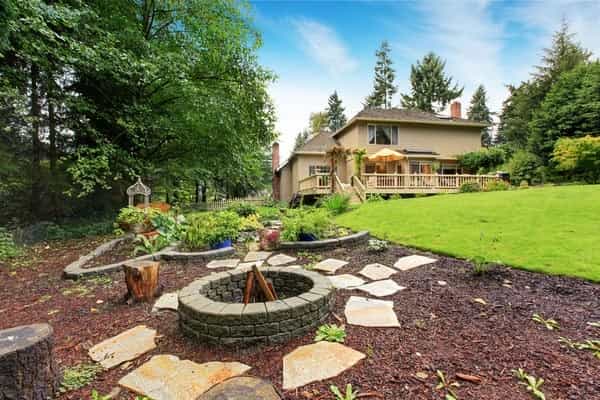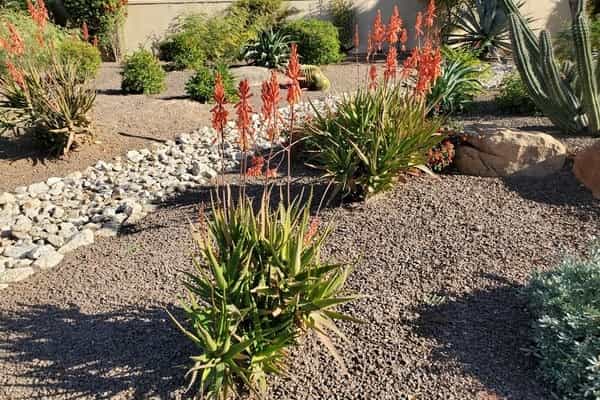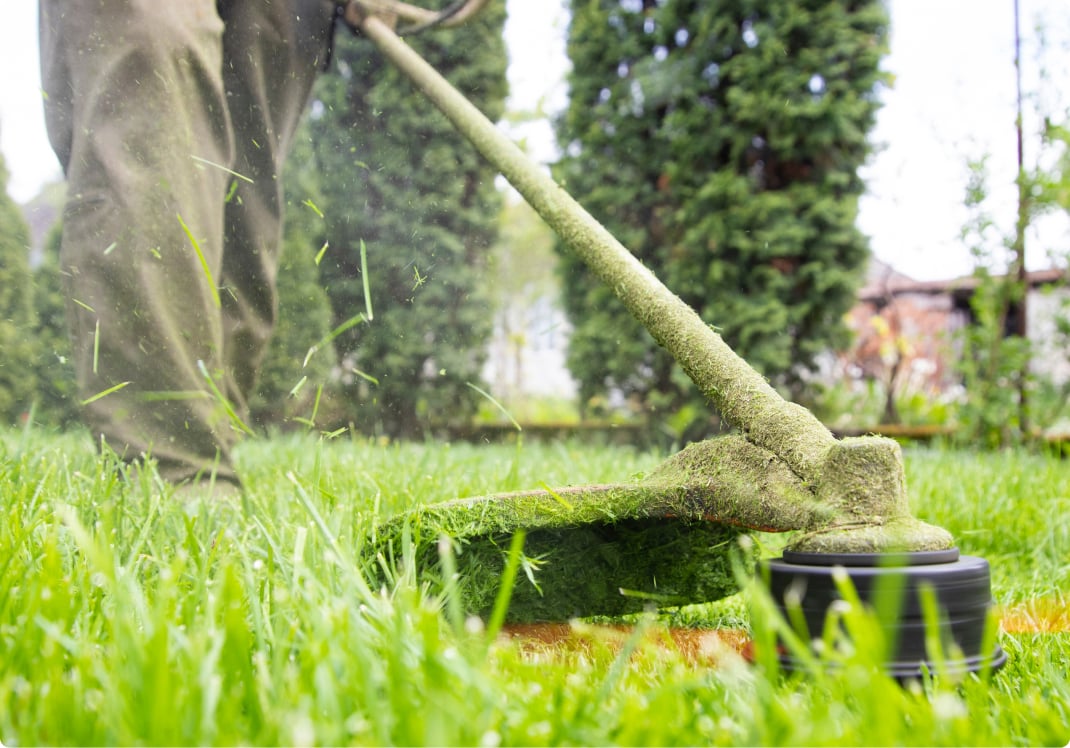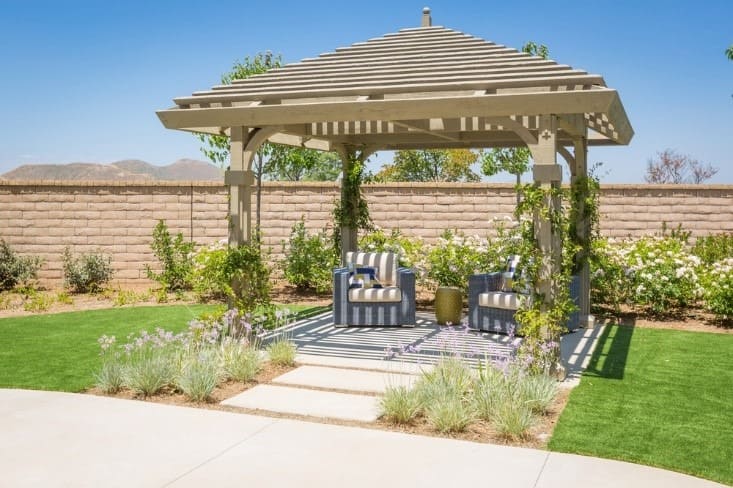Picture this: You’re sitting in a cozy chair on your back porch. A breeze carries the fragrant scent of a gardenia bush blooming with waxy white flowers. The lawn is green and lush as far as the eye can see. Perfectly trimmed topiary plants express your knack for artistic creativity. Steppingstones form a path to your outdoor fire pit.
This mental image probably seems fanciful for someone just delving into landscaping—but it's achievable if you take it one step at a time. Fortunately, you don't need a green thumb to have your home's landscaping look like you've spent hours in the soil. These landscaping ideas from American Home Shield® will help your yard become the envy of the neighborhood.
First, create a plan.
Before getting your hands dirty tackling your landscaping project, figure out the landscape design, which involves determining which parts of your yard you want to focus on and how to landscape each area. Analyze your space, and notice structures that already exist in your yard, such as trees, walls, and fences. Make a note of any natural water sources and artificial water sources, like hose outlets.
Then, draw out a yard blueprint that depicts a rough estimate of your space. You can even use apps like Home Outside and Home Design 3D that create a blueprint through 3D rendering.
Now it's time to choose your plants. When considering garden landscaping ideas, make sure that any trees, shrubs, and flowers you want to be planted in your yard are native to your area or at least fit your region's specific climate. Some plants thrive in tropical climates while others do better in dry heat—still others grow best in cooler temperatures. Choosing the right plants for the environment will give you the best chance of success. The safest route is to plant perennials like ferns, tulips, grasses, and fruit trees that come back to life every year.
When it comes to landscaping for beginners, pictures are key. Thankfully, apps such as iScape and Landscaper’s Companion show what your yard will look like with different plants and arrangements.
Hardscape now, softscape later.
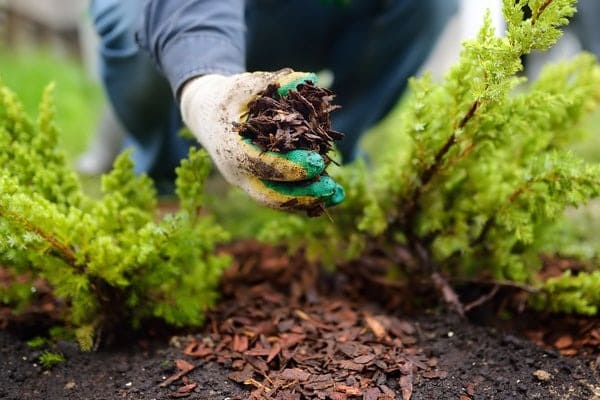
It’s a good idea to begin your landscaping project with hardscaping: the areas such as walkways, stairs, sidewalks, and walls made of hard-wearing materials. You’ll need to know what areas of your yard you’d like to be hardscaped before getting started with the plant-oriented, or softscape, design.
Although many people use landscaping stones such as flagstones to hardscape, stones can be expensive. One way to save money is to use rocks instead. Simple to spread around, long-lasting, and aesthetically pleasing, rocks can be used to take up space in areas of your yard where it’s harder to grow grass and other plants.
To save yourself time and energy in the long run, remember to put down weed barrier cloth—otherwise known as landscaping fabric—so that you don’t need to get rid of weeds after the rocks are set up in your landscape design. If you forget to put down the weed barrier cloth, fear not: Weed control such as hand cultivation, mulching, heat wilting, or chemicals will help keep those stubborn weeds from continuing to crop up.
Another simple landscaping idea is to use mulch to define and delineate yard spaces. Usually a recycled byproduct of lumber and paper, mulch comes in multiple colors and textures and can help your yard look well-thought-out and put together. Unlike rocks, however, mulch needs to be replaced every few years, so if your backyard landscaping ideas change from year to year, no problem. An upside to mulch’s more transient nature is that you can switch up your yard appearance more easily than if you use rocks.
Dream big but start small.
Landscaping your yard can be challenging if you've never done it before. Starting small means that you can see and enjoy the process without becoming overwhelmed. Try breaking your landscaping plans up into achievable goals so that you don't end up giving up.
A good way to go about this is to create do-it-yourself landscaping ideas that use the SMART goal approach: Specific, Measurable, Attainable, Relevant, and Time-based. For example, if your goal is to create a beautiful garden haven, you don’t have a specific or measurable goal, but if your goal is to plant a flowerbed by the end of the month, it’s manageable.
